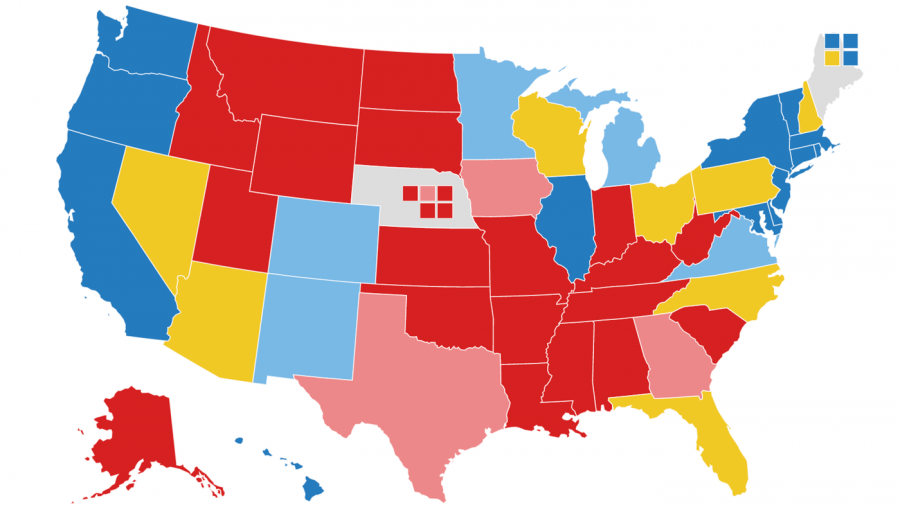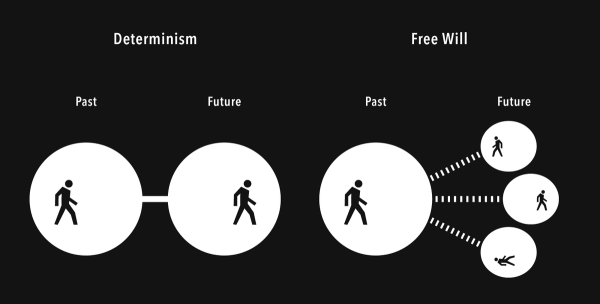Trump and His War in the Rust Belt – a Romance, Drama, and Thriller
Photo courtesy NPR
Moraine, Ohio – the setting of American Factory, the 2019 Academy Award-winning documentary highlighting the differences between the factory atmospheres and working conditions of high-tech industrial China and a lower-middle class post-industrial neighborhood struggling to recover from the sudden shutter of a General Motors plant, followed by the alien takeover of Chinese billionaire Cao Dewang’s automobile and construction glass manufacturing company, Fuyao.
Ohio is only one of the nine states that characterize America’s notorious Rust Belt, the most prominent of which including Illinois, Michigan, and Indiana. The Rust Belt, a northeastern region of the United States experiencing industrial decline since the 1980s, serves not only as an investment property for foreign executives like Cao Dewang, but also as one of the most active battlefields for almost every bipartisan election America has come to know – states making up the Belt such as Ohio and Wisconsin are what politicians recognize as “swing states,” any state where either political party has an equal chance of winning due to the uncertain, constantly swinging party preferences. Tensions are high and guarantee is low – the exact reason why the Rust Belt has become a recurring campaign site for one of the most competitive, thrilling, and groundbreaking events of the year: the 2020 Presidential Election.
In 2016, President Donald J. Trump won the election by carrying several small cities and towns in Rust Belt states. The mostly uneducated white Republican voters of the Belt were motivated by Trump’s promises for a surge in economy, echoing over their desperation to lead a stable life in the failing regions of the states they call home, which are also, arguably, the weakest links of the American chain. Although the US did experience a 2.9% increase in GDP in 2018, this was the same rate GDP grew during Obama’s last year in office and, more importantly, only half of what Trump claimed would be the 4-6% annual climb that appealed to most swing voters. Regardless, the jobs that were assured in Trump’s 2016 campaign were still lost to the trade-war or replaced by automation and hope for the economic prosperity that once belonged to the states of the Rust Belt faded with the support for the Republican party as the presidency progressed.
It seems as though the President has realized this. With less than two weeks to the election, the Republican candidate has decided to appeal to the Rust Belt for the second time to win back his popularity. He’s promising the same things he did four years ago – jobs, jobs, jobs, and more jobs – and although some voters seem to miss Trump’s patriotism and devotion to the nation, others are reportedly tired of his campaign and want to claim back, as Rust Belt voter Chuck Howenstein articulated on a BBC News interview on October 18th, the “normalcy” and “decency” that was present before 2016. One major factor playing in to decide the outcome of the election is the ongoing coronavirus pandemic, on which President Trump and democratic candidate and former Vice President Joe Biden hold drastically contrasting stances.
Trump, having caught the virus himself, is adamant on the idea that the American people should not be intimidated by the virus he continuously names the “China plague,” tweeting after being discharged from Walter Reed, “…don’t be afraid of Covid.” These apparently ignorant and self-centered words have angered many former supporters who have lost friends and family members to the constantly skyrocketing death toll. Since January, the pandemic has claimed the lives of over 221,000 Americans, the highest number of deaths in the world. The 32.9% shrink in economy along with the most amount of jobs lost since the Great Depression exacerbated the situation and severely tarnished, or, ironically, rusted, President Trump’s reputation as a reflection of his hypocrisy and incomprehension to the suffering people of the US. The citizens of the Rust Belt have been hit the hardest, as increasing levels of the unemployed and uninsured leave these regions most susceptible to the detrimental effects of the virus.
The one bright side to Trump’s failure shines on Joe Biden, the potential future President that must clean the mess the current one produced. The former Vice President looks in a completely different direction than Trump – focusing on the specifics of COVID recovery and always wearing a mask in public. These plans and precautions seem to appeal to the voters of the Rust Belt that Biden is also trying to evidently win over. With his retracing of Trump’s steps and increase in popularity shown through polls, the swing states of the Rust Belt could be Biden’s shortest and most efficient path to the White House – while Trump won the Belt over four years ago with economy, he might lose them to coronavirus in 2020.
The President and the swing voters he so desperately clings on to might be going through a breakup right before the finale – an election outcome from the swing states is inherent, but whether or not the Rust Belt will turn red or blue on November 3rd is up for debate. A chain is as strong as its weakest link – the fate of the nation and how it launches itself into the new decade is very much, without a doubt, in the hands of America’s weakest link.







